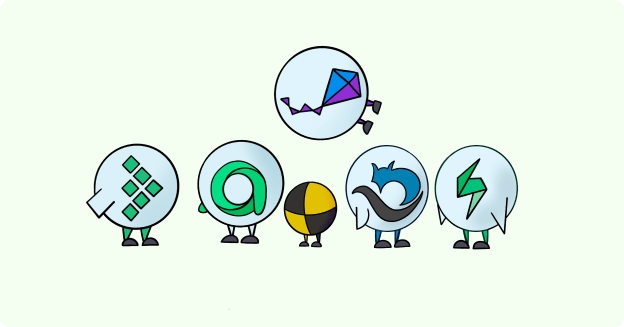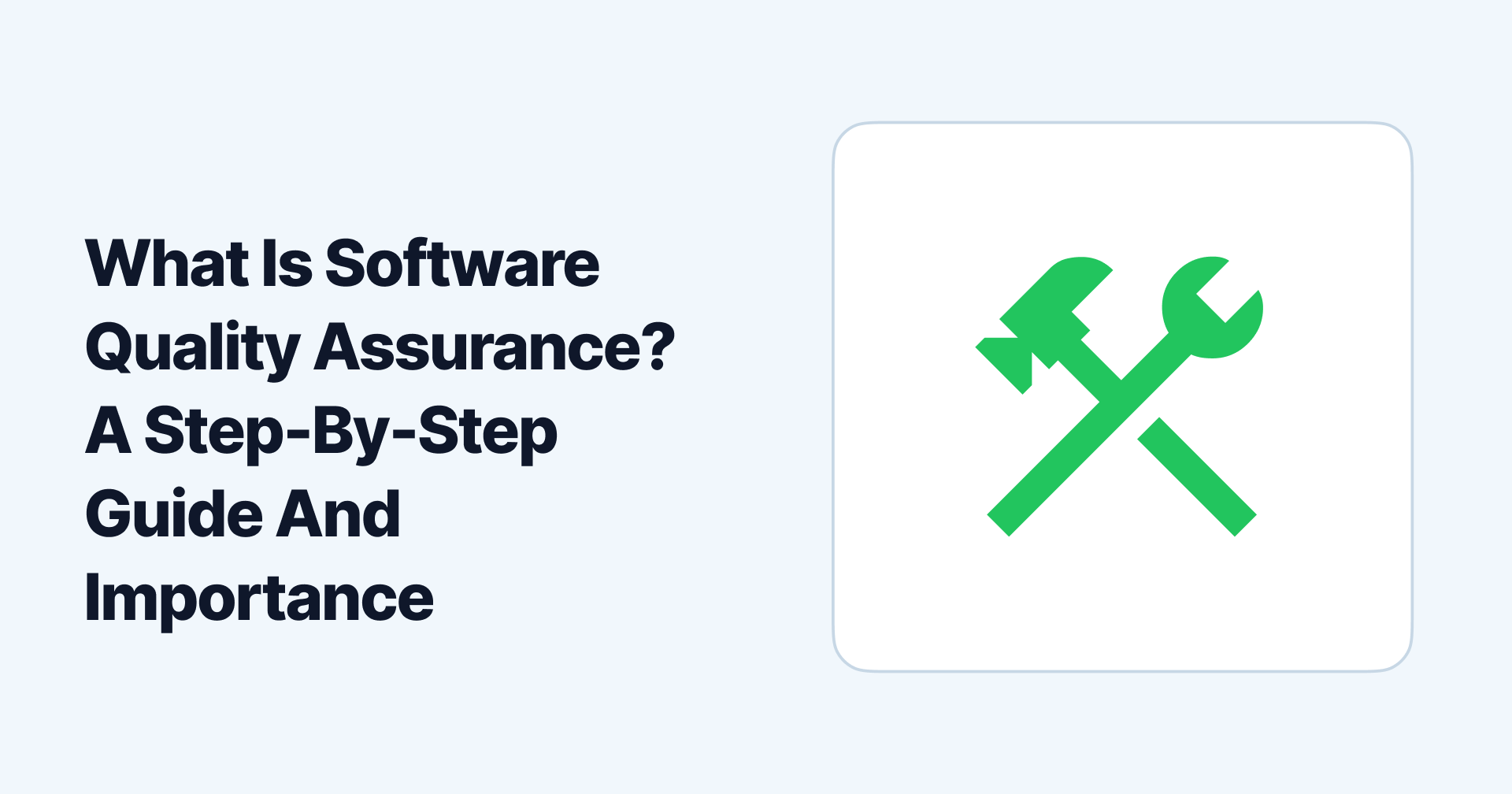In today’s age of rapid technological advancements, users require cutting-edge software solutions to solve specific pain points and enhance their quality of life.
However, your business needs to provide robust solutions that are also error-free. Your customers will be left with an unsatisfactory experience with a product riddled with bugs, thus lowering the chances of returning to you in the future.
To safeguard your revenue and build trust, you must test your products effectively before they reach the market. With continuous testing, you can ensure superior software quality without delaying your launch dates to stay ahead of your competitors.
In this article, learn more about continuous testing, the advantages it brings to your company, and the recommended tool to optimize and streamline your testing processes.
What is Continuous Testing?
Continuous Testing (CT) is an automated software testing process where a product is frequently tested early and throughout the software development lifecycle (SDLC). The goal of CT is to evaluate the quality of the product, obtain feedback, and assess the possible business risks.
CT is an integral part of the Continuous Integration and Continuous Deployment (CI/CD) process by ensuring all the codes added to the SDLC are bug-free without compromising delivery speed. Faster deployment rates mean better ROI for businesses.

Advantages of Continuous Testing
In traditional testing processes like a waterfall, businesses usually follow a hands-off approach to testing. The DevOps processes followed a rigid structure of development cycles where one team would hand over the project to the next after their objectives were met.
Developers hand over projects to QA testers to test out the features and look for errors towards the end of the cycle, after which they would hand the project back to the developers with critical feedback. The testing process ends up being time-consuming to execute and a resource drain.
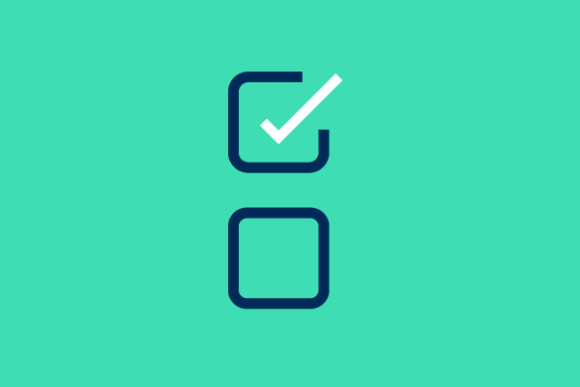
Continuous testing brings in QA testing early on in the SDLC process. It allows DevOps teams to “shift-left” before significant UI elements and backend APIs are implemented to speed up the release of quality applications.
CT requires the collaboration of several teams, such as stakeholders, development teams, QA testers, etc., to eliminate bottlenecks in the production cycle through automated testing. Automation ensures every code added to the build enhances the end user’s experience.
Pre-defined scripts validate the efficiency of the additions to the source code and provide feedback at every stage of development. If an automated test fails, the relevant teams are notified to make adjustments before these affect the later stages.
Here are more benefits of continuous testing that can further help your DevOps processes in the following ways:
Continuous testing eliminates possible business risks through improper coding and manual errors with critical feedback and constant automated testing in the early stages and each stage of the SDLC so that problems are rooted out without much hassle.
A single error can cause problems in every subsequent stage of development if integrated accidentally. These errors can add up and affect your productivity and release schedule by forcing developers to fix errors from the ground up.
CT provides you with more granular control of the development cycle to avoid unnecessary downtime and focus on creating a product to meet the requirements instead.
Integrating CT into SDLC can save time and resources and directly accelerate software delivery by establishing better collaboration and communication between DevOps teams through insights into the validity of their codes.
End-to-end testing processes help prioritize the user experience by adapting to dynamic customer requirements. Frequent updates based on customer feedback can help direct your efforts into removing inefficiencies and thus help win customer loyalty.
Your applications are protected from unexpected changes and attacks even after deployment by ensuring the system stays stable and recoverable.
Consistent test procedures through automation help applications meet quality standards.
Different Methodologies of Continuous Testing
Continuous testing covers several procedures to ensure better usability, security, and overall performance for a particular application. These tests include:
- Shift-Left Testing:
This method of testing is what we have mainly discussed thus far, i.e., a testing process where software and systems are tested early in the SDLC to prevent problems caused by bugs present in the beginning stages of development.
- Shift-Right Testing:
Unlike the previous method, shift-right testing occurs near the SDLC’s end. Developers work alongside users to understand their requirements and evaluate the application’s performance.
- Unit Testing:
Unit tests are done on a granular level by verifying every function and component to identify errors within the application structure.
- Smoke Tests:
Smoke tests are a quick set of tests deployed on build cases to confirm if the application is ready to be tested by the QA team. Smoke testing ensures the stability of the given model.
- Regression Testing:
This method detects changes in performance, dependencies, and functionality after an error is identified and corrected.
- Integration and Message Testing:
These tests are carried out to identify errors when software modules are working together simultaneously. The virtualization of missing dependencies in the performance of end-to-end processes and scenarios is done with CT.
The collected composite code is executed during run time to discern if these processes perform as expected.
- Functional Testing:
Functional testing verifies if the product can accurately deliver the intended customer experience and if the workflows are executed whenever needed across the system.
- Performance Testing:
Software testing needs to consider the performance of hardware and middleware through integrated system testing. Application testing in controlled environments does not consider the final production environment.
- User-Acceptance Testing:
This method of testing is done by a select group of end-users in real-world situations, for example, beta testing.
Automated Testing and Continuous Testing

Automated and continuous testing is individually integral to DevOps and Continuous Delivery, but it would be inaccurate to use them synonymously. Both have their individual goals and objectives when applied to development processes.
Automated testing reduces the time taken to do specific manual tasks while ensuring zero errors. While exploratory testing needs to be done manually, you can utilize software testing tools like Allure TestOps to automate repetitive tasks.
Continuous testing requires automated testing to identify errors and bugs early in the SDLC so developers can focus on fixing them to create robust applications. Your development cycle needs a variety of tests to ensure a high-quality product that delivers on user expectations.
Allure TestOps: The Ultimate Test Reporting Tool
Allure TestOps is an open-source software quality management and analytics platform that aims to integrate into your pipelines to provide a single platform for you to run your tests through native integrations. Allure TestOps helps you streamline manual and automated test processes.
Our Live Documentation feature enhances the tracking process of numerous test runs by automatically updating multiple test cases based on results for each test run. The Test Cases as Code feature can be used for manual testing for superior version control.
You and your team can access a central hub to readily view and act on CI/CD pipelines for manual and automated testing. Build jobs can be paused, resumed, or set for reruns seamlessly from our build servers.
Allure TestOps identifies defects to sort them into issue trackers, and you get detailed insights in real time with easy-to-read visualizations. Allure TestOps dashboards lets you create targets, review product status, and observe the testing processes closely.
Allure Report helps you create detailed test reports with visualizations on a community-driven platform that offers integrations for programming languages, frameworks, and test automation tools for CI systems such as Jenkins, Bamboo, GitLab, GitHub, CircleCI, TeamCity, etc.
Furthermore, you can drill down on particular reports for test cases to get full transparency on success rates, duration, flakiness, and other metrics on a tree-based representation.
Pricing
Depending on your company’s technical requirements, Allure TestOps gives you a choice between two pricing plans, Allure TestOps Server and Allure TestOps Cloud.
Allure TestOps Server provides complete control over instances and integrates into your preferred CI/CD without coding. It installs directly on your server, and you are charged for every active user. You can try out our features risk-free with a 30-day free trial.
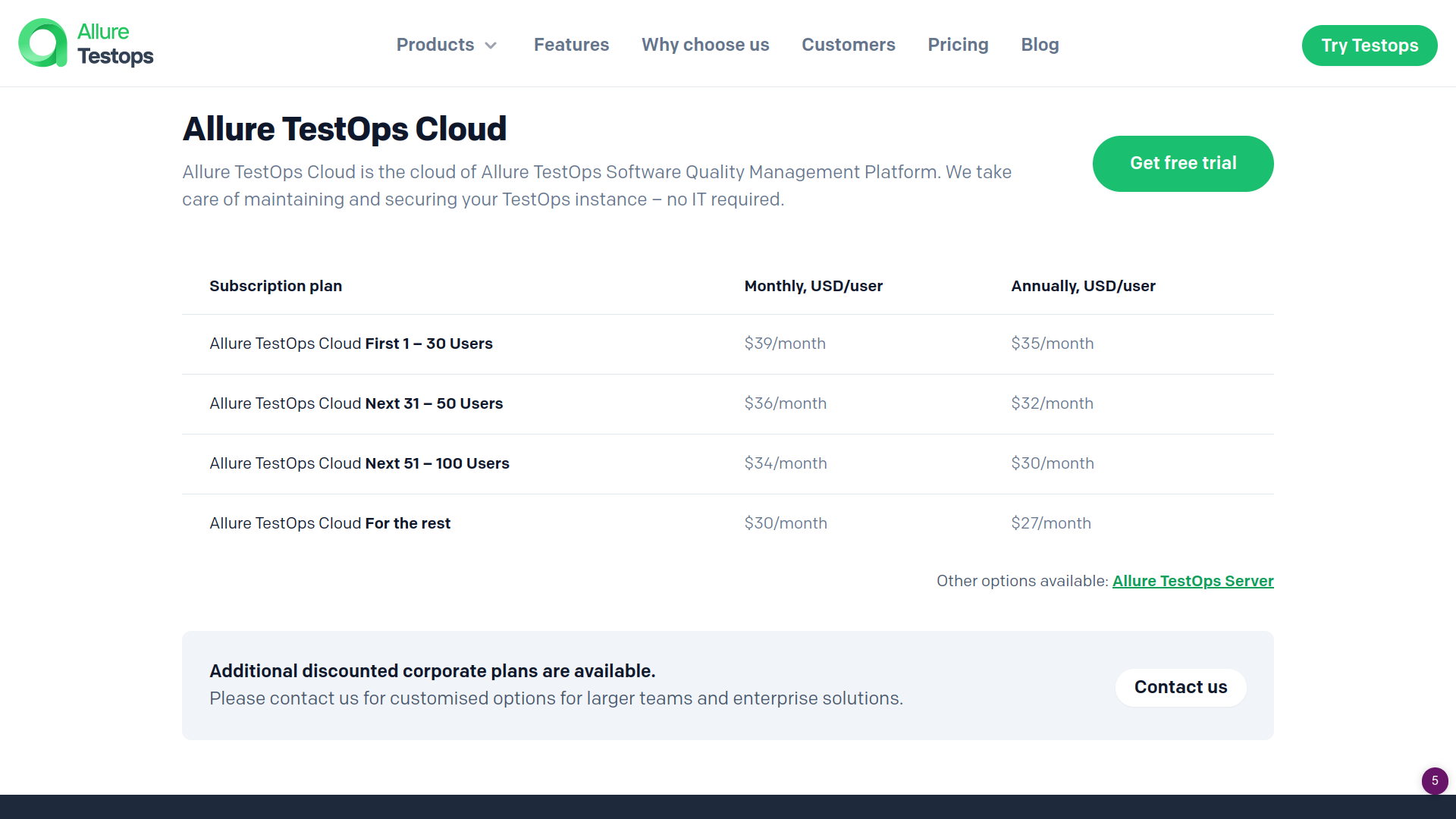
| Allure TestOps for 1 - 50 users | $30/month or $27/month (annual) |
|---|---|
| Next 51 - 100 users | $20/month or $18/month (annual) |
| Next 101 - 250 users | $10/month or $9/month (annual) |
| Others | $5/month or $4.5/month (annual) |
Allure TestOps Cloud is our cloud platform for Allure TestOps that we present to companies with limited IT expertise. We maintain and secure your TestOps instances. You can try out our cloud features with a 14-day free trial.
| Allure TestOps Cloud for 1 – 30 Users | $39/month or $35/month (annual) |
|---|---|
| Next 31 – 50 Users | $36/month or $32/month (annual) |
| Next 51 – 100 Users | $34/month or $30/month (annual) |
| Others | $30/month or $27/month (annual) |
Conclusion
Your customers are dependent on software solutions for a variety of daily tasks. The rise in technological advancements means your company needs to stay ahead of the competition to provide products users can trust and utilize without hassle.
However, software development relies on rigorous testing to ensure superior quality and functionality. Without quality products and services, you risk losing out on your customer base and potential buyers, thus hurting your ROI.
Continuous testing can help your teams collaborate to test every addition to your source code and rapidly complete each stage of development so that you can put yourself in the market before anyone else.
Allure TestOps can help streamline your testing processes and gain actionable insights on all test cases so that you can make informed decisions throughout the development cycle.
Contact us to get customized solutions for your business requirements. Try out Allure TestOps Server for 30 days or Allure TestOps Cloud for 14 days before subscribing to our premium plans. Create your applications with confidence with Allure TestOps today.
